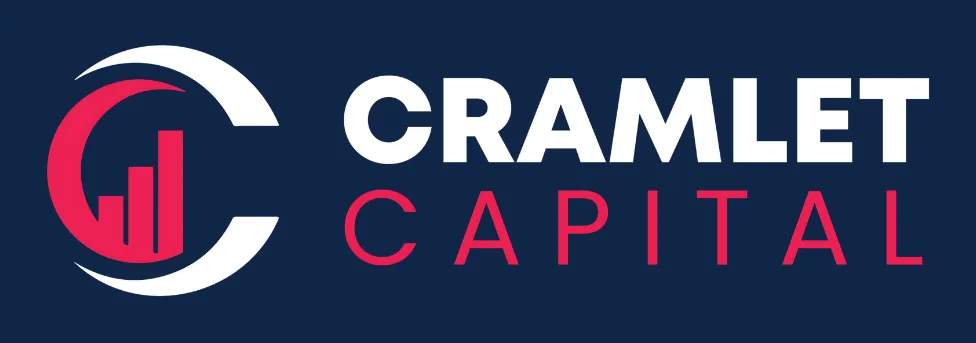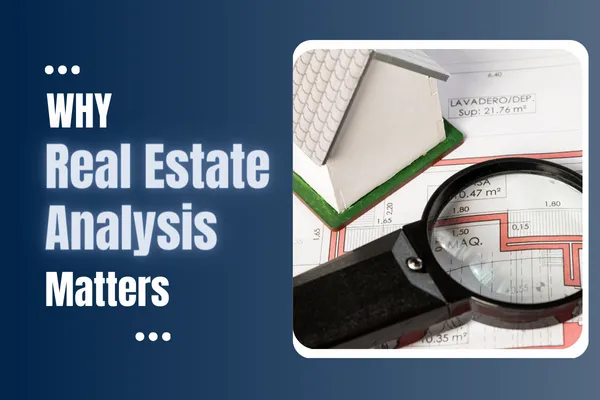
Investment Articles
Our Mission to Changes Lives and Create Generational Wealth through Real Estate Investing!
From Finance

Why Real Estate Analysis Matters
Why Real Estate Analysis Matters:
An investment property analysis is a key element of any good investment strategy, whether you want to buy office buildings or residential properties as a way to invest in real estate and take advantage of potential investment property value gains.
This process helps real estate investors determine their real estate investments’ current performance and identify areas for improvement. In its basic form, real estate investing analysis involves calculating investment returns.
Choosing Property Type:-Multifamily Real Estate
Larger investment properties— with more than four—are priced and valued differently. The value equates directly to how much income or profit the investment property produces. An apartment building in a neighborhood where house prices are dropping could, in fact, increase in value.
You can’t just compare your apartment building to others down the street to see how much it’s worth. That’s why real estate investment analysis is so important.
There are several primary factors to consider, but cash flow and appreciation are the two most important variables. Cash flow is simply the money left after all the bills have been paid, and appreciation is the equity gained as the investment property value increases.
There are not many great ways to estimate future appreciation for commercial properties or residential properties without a crystal ball, so I generally focus on cash flow.
Key Elements of Real Estate Investment Analysis:
These are the main steps to evaluating a property’s investment potential. It combines several real estate evaluation methods to give the most accurate ROI prediction possible. Note the word ‘’prediction’’ here: It’ll never be 100% accurate. An analysis is just that: It gives you an estimate or a prognosis. It gives you potential return numbers, which are not guaranteed.
Remember that investment property buying comes with risks, whether you own only one investment property or are one of the most successful real estate developers out there buying billion-dollar commercial properties.
Good financial analysis involves inputting key information metrics into a financial model and using its calculations to determine whether the investment is good or bad—and right for you. You’ll need to know these variables for the most thorough financial analysis of residential rental property:
Property Details:
Understand unit count, square footage, and other specifics.
Purchase Information:
Consider total expenses, rehab costs, and closing costs.
Financing Details:
Include mortgage amount, down payment, interest rates, and closing costs.
Income:
Calculate monthly rent and additional income sources.
Expenses:
Factor in property taxes, insurance, maintenance, and other costs.
Data Sources:
Property details should be available from the seller. Check with your local records office for more comprehensive, detailed information.
Purchase information includes any up-front maintenance or improvements that must be completed before the property can meet its income potential. Have the property inspected to ensure there are no hidden issues or problems.
Financing details can come from your lender or mortgage broker.
Income details come directly from the seller—but don’t rely on pro forma data. You can also talk to the property management company currently handling the property, if one exists, for this information.
Expenses should also come directly from the seller or property management company. A building inspector can warn you about any major upcoming repair costs, such as a new roof or HVAC system.
Assess Proforma VS Actual Data
Getting good data from your model requires reliable, accurate information. Remember: It’s in the seller’s best interest to provide appealing—not accurate—numbers. For example, they may provide high rental property income estimates or neglect to mention certain maintenance expenses. Part of the investor’s job is to ensure you have the best available information.
“Pro forma”—or estimated—data from the seller merely kicks off the discussion. Before closing, determine the actual numbers. Ask to see previous years’ tax returns, property tax bills, and maintenance records. Hopefully, the actual data is similar to the pro forma data—but it may be different.
Check for potential surprises, too. For example, when was the last time the property was assessed for taxes? If it was a while ago and values have increased significantly, it’s possible the property will soon be reassessed and taxes will increase. Even small changes to the income and expense numbers can mean big changes in your bottom
Comparative Market Analysis (Comp Analysis):
Comp analysis is short for comparative market analysis. Quite simply, it’s a way to predict the value of a real estate asset by comparing it to the real estate values of similar assets recently sold. Real estate professionals use various metrics to perform a comp analysis: typically, the size, age, and location of a property, as these can be compared on a like-for-like basis.
Rental comps are calculated the same way sales comps are, but instead of determining the potential sales price of a home, you will determine how much rental property income it generates.
Comp analysis can be performed for any building type, from a single-family home to a 100,000-square-foot office building. Plenty of digital tools and services can give you the right data, including sales history, to perform comps on commercial real estate.
Income Analysis:
Income analysis, or the income approach, is one of the most popular real estate valuation methods. It has a simple formula: net operating income divided by the capitalization rate (projected rate of return).
Formula: Net Operating Income (NOI) / Capitalization Rate (Cap Rate). For example, adding a washer and dryer to each unit raises rents by $60 per unit, per month. 100 units X $60=$6000 X 12 months =$72,000 per year. $72,000/6% Cap Rat=$1,200,000 So YES adding washers and dryers makes financial sense!
Assessing the Property's Gross Income: Gross income is the total income generated from the property. When you collect monthly rents and other income from things like laundry facilities and parking fees, you generate income. Most of a property’s income generally derives from monthly rent—making it extra important to account for unit vacancy. Most areas have an average vacancy rate, although your property’s specific vacancy rate may be higher or lower. If so, you’ll want to factor that into your analysis. For the formula, leverage the occupancy rate which is the exact opposite of the vacancy rate. If the vacancy rate is 5%, then the occupancy rate is 95%. Together they equal the total 100% occupancy.
Formula: Calculate gross income x occupancy rate =Gross Income
Calculating NOI: A cornerstone metric of your financial analysis is net operating income (NOI). This determines the property’s total income after all expenses or your mortgage loan costs.
Formula: NOI=income-expenses
Typically, NOI is calculated monthly using income and expense data, which can be easily converted to annual data simply by multiplying by 12.
Analyzing Real Estate Expenses Now lets's calculate the total expenses for a property. In general, expenses break down like so when you invest in real estate:
Property Taxes
Insurance
Maintenance
Capital Expenditures
Management
Advertising
Landscaping
Utilities
Performance Measurements:
We’ve learned that NOI is the property’s total income. But you might wonder, “Why doesn’t NOI include the expensive cost of the loan, since that will ultimately affect your bottom line?”
Cash Flow:
Income minus expenses.
Consider monthly debt service for a comprehensive view.
Returns on Investment (ROI):
Total returns relative to the total investment made
Compare ROI with other investment vehicles such as stock or bonds
Capitalization Rate (Cap Rate):
NOI is divided by property price. For example, an asset with a Net Operating Income of $80,000 that costs $1 million has an 8% Cap Rate ($80,000 divided by $1,000,000)
Independent of buyer and financing.
Cash-on-Cash Return (COC):
Cash flow relative to cash invested.
Reflects financing impact.
Total Return on Investment (ROI):
Considers tax consequences, property appreciation, and equity accrued.
Provides a holistic view of returns.
Bonus Depreciation: Tax Benefit
Tax incentive designed to stimulate business investment by allowing companies to accelerate the depreciation of qualifying assets, (washers, dryers, appliances, flooring, ect), rather than write them off over their useful life. The bonus depreciation tax incentive is scheduled to be going away at the end of 2026.
Conclusion:
Real Estate Investment Analysis:
Utilize multiple metrics for accurate predictions.
Perseverance over time enhances investment success.
Extend analysis to consider market trends of population growth, job growth, tax incentives and demographic data.
In short, real estate investment analysis is very important. Here at MFI Partners, we have a track record of success and pride ourselves on helping you understand our Value-Add Multifamily Investment analysis as a Limited Partner. Here we do all the heavy lifting for you, so you do not have to sign on for the mortgage loan, or put together the business plan, or worry about a tenant with a clogged toilet at 2am. Our typical deal averages an 8% preferred return, 40-80% bonus depreciation (Tax benefits) and a 2X equity multiplier at the end of the typical 3-5 year hold period, which is a 100% ROI!
Investing in Value-Add Multifamily Investments through Syndication is one the best unfair advantages to growing and protecting your wealth. We like to call it the “tale of two retirements” and compare it to the S&P 500 at a 9% average annual rate of return compared to Value-Add Multifamily at 20% average annual rate of return with monthly or quarterly cash distributions (Cash on Cash returns), and tax benefits built- in. (Bonus depreciation) Want to see what a typical deal looks like? Stay tuned for our next Blog that will cover “a typical deal”.
Investment Articles

Why Real Estate Analysis Matters
Why Real Estate Analysis Matters:
An investment property analysis is a key element of any good investment strategy, whether you want to buy office buildings or residential properties as a way to invest in real estate and take advantage of potential investment property value gains.
This process helps real estate investors determine their real estate investments’ current performance and identify areas for improvement. In its basic form, real estate investing analysis involves calculating investment returns.
Choosing Property Type:-Multifamily Real Estate
Larger investment properties— with more than four—are priced and valued differently. The value equates directly to how much income or profit the investment property produces. An apartment building in a neighborhood where house prices are dropping could, in fact, increase in value.
You can’t just compare your apartment building to others down the street to see how much it’s worth. That’s why real estate investment analysis is so important.
There are several primary factors to consider, but cash flow and appreciation are the two most important variables. Cash flow is simply the money left after all the bills have been paid, and appreciation is the equity gained as the investment property value increases.
There are not many great ways to estimate future appreciation for commercial properties or residential properties without a crystal ball, so I generally focus on cash flow.
Key Elements of Real Estate Investment Analysis:
These are the main steps to evaluating a property’s investment potential. It combines several real estate evaluation methods to give the most accurate ROI prediction possible. Note the word ‘’prediction’’ here: It’ll never be 100% accurate. An analysis is just that: It gives you an estimate or a prognosis. It gives you potential return numbers, which are not guaranteed.
Remember that investment property buying comes with risks, whether you own only one investment property or are one of the most successful real estate developers out there buying billion-dollar commercial properties.
Good financial analysis involves inputting key information metrics into a financial model and using its calculations to determine whether the investment is good or bad—and right for you. You’ll need to know these variables for the most thorough financial analysis of residential rental property:
Property Details:
Understand unit count, square footage, and other specifics.
Purchase Information:
Consider total expenses, rehab costs, and closing costs.
Financing Details:
Include mortgage amount, down payment, interest rates, and closing costs.
Income:
Calculate monthly rent and additional income sources.
Expenses:
Factor in property taxes, insurance, maintenance, and other costs.
Data Sources:
Property details should be available from the seller. Check with your local records office for more comprehensive, detailed information.
Purchase information includes any up-front maintenance or improvements that must be completed before the property can meet its income potential. Have the property inspected to ensure there are no hidden issues or problems.
Financing details can come from your lender or mortgage broker.
Income details come directly from the seller—but don’t rely on pro forma data. You can also talk to the property management company currently handling the property, if one exists, for this information.
Expenses should also come directly from the seller or property management company. A building inspector can warn you about any major upcoming repair costs, such as a new roof or HVAC system.
Assess Proforma VS Actual Data
Getting good data from your model requires reliable, accurate information. Remember: It’s in the seller’s best interest to provide appealing—not accurate—numbers. For example, they may provide high rental property income estimates or neglect to mention certain maintenance expenses. Part of the investor’s job is to ensure you have the best available information.
“Pro forma”—or estimated—data from the seller merely kicks off the discussion. Before closing, determine the actual numbers. Ask to see previous years’ tax returns, property tax bills, and maintenance records. Hopefully, the actual data is similar to the pro forma data—but it may be different.
Check for potential surprises, too. For example, when was the last time the property was assessed for taxes? If it was a while ago and values have increased significantly, it’s possible the property will soon be reassessed and taxes will increase. Even small changes to the income and expense numbers can mean big changes in your bottom
Comparative Market Analysis (Comp Analysis):
Comp analysis is short for comparative market analysis. Quite simply, it’s a way to predict the value of a real estate asset by comparing it to the real estate values of similar assets recently sold. Real estate professionals use various metrics to perform a comp analysis: typically, the size, age, and location of a property, as these can be compared on a like-for-like basis.
Rental comps are calculated the same way sales comps are, but instead of determining the potential sales price of a home, you will determine how much rental property income it generates.
Comp analysis can be performed for any building type, from a single-family home to a 100,000-square-foot office building. Plenty of digital tools and services can give you the right data, including sales history, to perform comps on commercial real estate.
Income Analysis:
Income analysis, or the income approach, is one of the most popular real estate valuation methods. It has a simple formula: net operating income divided by the capitalization rate (projected rate of return).
Formula: Net Operating Income (NOI) / Capitalization Rate (Cap Rate). For example, adding a washer and dryer to each unit raises rents by $60 per unit, per month. 100 units X $60=$6000 X 12 months =$72,000 per year. $72,000/6% Cap Rat=$1,200,000 So YES adding washers and dryers makes financial sense!
Assessing the Property's Gross Income: Gross income is the total income generated from the property. When you collect monthly rents and other income from things like laundry facilities and parking fees, you generate income. Most of a property’s income generally derives from monthly rent—making it extra important to account for unit vacancy. Most areas have an average vacancy rate, although your property’s specific vacancy rate may be higher or lower. If so, you’ll want to factor that into your analysis. For the formula, leverage the occupancy rate which is the exact opposite of the vacancy rate. If the vacancy rate is 5%, then the occupancy rate is 95%. Together they equal the total 100% occupancy.
Formula: Calculate gross income x occupancy rate =Gross Income
Calculating NOI: A cornerstone metric of your financial analysis is net operating income (NOI). This determines the property’s total income after all expenses or your mortgage loan costs.
Formula: NOI=income-expenses
Typically, NOI is calculated monthly using income and expense data, which can be easily converted to annual data simply by multiplying by 12.
Analyzing Real Estate Expenses Now lets's calculate the total expenses for a property. In general, expenses break down like so when you invest in real estate:
Property Taxes
Insurance
Maintenance
Capital Expenditures
Management
Advertising
Landscaping
Utilities
Performance Measurements:
We’ve learned that NOI is the property’s total income. But you might wonder, “Why doesn’t NOI include the expensive cost of the loan, since that will ultimately affect your bottom line?”
Cash Flow:
Income minus expenses.
Consider monthly debt service for a comprehensive view.
Returns on Investment (ROI):
Total returns relative to the total investment made
Compare ROI with other investment vehicles such as stock or bonds
Capitalization Rate (Cap Rate):
NOI is divided by property price. For example, an asset with a Net Operating Income of $80,000 that costs $1 million has an 8% Cap Rate ($80,000 divided by $1,000,000)
Independent of buyer and financing.
Cash-on-Cash Return (COC):
Cash flow relative to cash invested.
Reflects financing impact.
Total Return on Investment (ROI):
Considers tax consequences, property appreciation, and equity accrued.
Provides a holistic view of returns.
Bonus Depreciation: Tax Benefit
Tax incentive designed to stimulate business investment by allowing companies to accelerate the depreciation of qualifying assets, (washers, dryers, appliances, flooring, ect), rather than write them off over their useful life. The bonus depreciation tax incentive is scheduled to be going away at the end of 2026.
Conclusion:
Real Estate Investment Analysis:
Utilize multiple metrics for accurate predictions.
Perseverance over time enhances investment success.
Extend analysis to consider market trends of population growth, job growth, tax incentives and demographic data.
In short, real estate investment analysis is very important. Here at MFI Partners, we have a track record of success and pride ourselves on helping you understand our Value-Add Multifamily Investment analysis as a Limited Partner. Here we do all the heavy lifting for you, so you do not have to sign on for the mortgage loan, or put together the business plan, or worry about a tenant with a clogged toilet at 2am. Our typical deal averages an 8% preferred return, 40-80% bonus depreciation (Tax benefits) and a 2X equity multiplier at the end of the typical 3-5 year hold period, which is a 100% ROI!
Investing in Value-Add Multifamily Investments through Syndication is one the best unfair advantages to growing and protecting your wealth. We like to call it the “tale of two retirements” and compare it to the S&P 500 at a 9% average annual rate of return compared to Value-Add Multifamily at 20% average annual rate of return with monthly or quarterly cash distributions (Cash on Cash returns), and tax benefits built- in. (Bonus depreciation) Want to see what a typical deal looks like? Stay tuned for our next Blog that will cover “a typical deal”.

Copyright © 2025 Cramlet Capital. All rights reserved.
